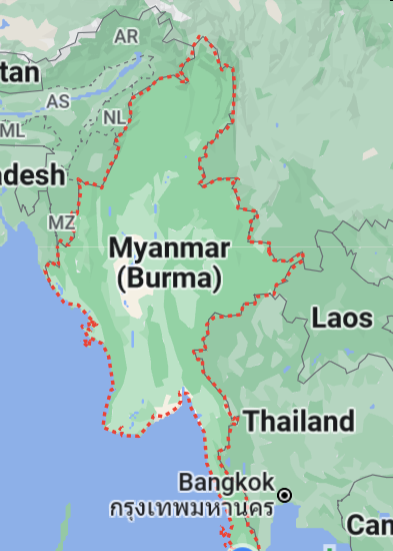Adani’s sale of the Myanmar port is more strategic that many realise
By RN Bhaskar
Being a visionary requires flexibility, but without sacrificing the bigger picture. The Myanmar port sale by the Adani group confirms this.
Yesterday, Adani Ports and Special Economic Zone Ltd (APSEZ) concluded the sale of its Myanmar port.
Holding a port in Myanmar was crucially important. It would offer India a strategic route to trade with its North-eastern states. It would facilitate military access to these sensitive regions as well.
Recalling events
It may be recalled that in 2015, everything pointed to the Adani group consolidating its hold on the Sittwe port in Myanmar. It would have allowed trade with Myanmar — a source for pulses required by India, and a market for engineering goods as well. Myanmar too wanted to balance its dependence on China with Indian investments (China already operates a port in Myanmar).
Funding was being tied up extremely well and the Gulf-based GFH Financial group came forward with money. But global lobbyists, opposed to the Adani Group, forced major global financiers to stop funding the Sittwe Port. Their argument – Adani would be supporting a military dictatorship.
The Adani group also faced fierce opposition to its plans in Australia, which were significantly bigger and more challenging. Worried about the domino effect the opposition to the Myanmar port could have on the group’s investments elsewhere, the Adani Group stopped all work on the Sittwe Port.
Sensibly, the Indian government was determined to have this port, recognizing the strategic significance of the Sittwe Port and the immense benefits it would bring to both countries. So, in July 2021, another Indian venture, Bharat Freight Group stepped into the crease and decided to set up this port.
Advantage Adani
That allowed the Adani group to focus exclusively on Australia, and it won the battle there. Many were certain that sooner or later, Adani would return to Myanmar. The sale of the Myanmar port appears to have scuttled such notions.
Why did the Adani group do this? There could be three reasons – all strategically sound.
First, just last week, Bangladesh offered India access to its Chattogram (Chittagong) and Sylhet ports. Both governments noted that that increased connectivity in the region will enhance people-to-people contact. That will give India access to the Northeast through rivers. The entire Northeast is better connected through rivers than through roads and rail. With the Chittagong route opening up, the Myanmar route became less important.
The release of the Myanmar port will give the Adani group access to $30 million cash, which is crucial in the post-Hindenberg times. So, without sacrificing its vision, or India’s interests, the Adani group consolidates its trade routes with the Northeast and also gets cash. That money will be used to fund ongoing projects.
Third, India will continue to develop the Myanmar port which the Adani group can use when the time is ripe.
Already, the group has evolved into an Integrated Transport Utility providing end-to-end solutions from its port gates to customer gates. It is the largest port developer and operator in India.
It has 6 strategically located ports and terminals on the west coast (Mundra, Dahej, Tuna and Hazira in Gujarat, Mormugao in Goa, and Dighi in Maharashtra) and 5 ports and terminals on the East coast of India (Dhamra in Odisha, Gangavaram, and Krishnapatnam in Andhra Pradesh, and Kattupalli and Ennore in Tamil Nādu). Together, they represent 24% of the country’s total port volumes, thus providing capabilities to handle vast amounts of cargo from both coastal areas and the hinterland. This does not include two other ports managed by the group overseas – in Australia and Haifa.
The company is also developing two transhipment ports at Vizhinjam, Kerala and Colombo, Sri Lanka. The group’s Ports to Logistics Platform comprises port facilities and integrated logistics capabilities. These include multimodal logistics parks, Grade A warehouses, and industrial economic zones, puts us in an advantageous position as India stands to benefit from an impending overhaul in global supply chains.
The group’s vision is to be the largest ports and logistics platform in the world in the next decade.
Significantly, this is being done without sacrificing any of the ESG and SDG goals. It plans to turn carbon neutral by 2025,
APSEZ is the first Indian port and third in the world to sign up for the Science-Based Targets Initiative (SBTi) committing to emission reduction targets to control global warming at 1.5°C above pre-industrial levels.
In effect, the Adani group continues to be visionary, and continues to grow. And it continues to play a vital role in the carbon footprint reduction plans cherished by the world.










































COMMENTS